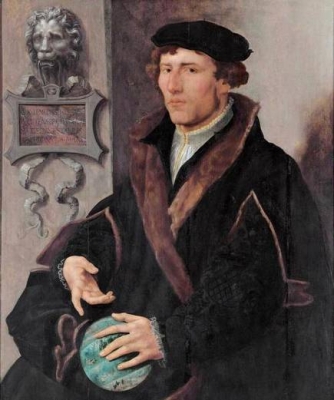
A box, room, or device (a darkened enclosure) that has a small hole (an aperture, maybe with a lens) through which light from external objects enters to produce an image on an opposite surface is called a camera obscura. Also referred to as pinhole camera at times, the basic optical principles of these have been known for a long time. While the earliest written observations can be dated back to over 2,000 years, the oldest known published drawing of a camera obscura is found in a 1545 book De Radio Astronomica et Geometrica.
The author of this book was a physician by the name Gemma Frisius. Apart from being a practising physician, he was also a mathematician, cartographer, philosopher, astronomer and instrument maker.
Teaches medicine and mathematics
Born Jemma Reinierzoon in Dokkum, Friesland, a town in modern Netherlands, in 1508, he lost his parents at a young age. While Gemma is a Latinised onomatopoeic version of his birth name, Frisius is the toponym for Friesland. Despite the fact that he was born into a poor family and was also orphaned early in his life, he not only earned a medical degree while studying at Leuven (a city in Belgium), but also stayed on to study mathematics and astronomy.
After he had obtained his MD degree in 1536, he practised medicine in the city for the rest of his life. He also remained in the faculty at Leuven’s University and as one of the leading theoretical mathematicians of the time, also taught mathematics.
Triangulation for surveying
Even before he got his MD degree, he had probably made one of his finest contributions. In 1533, Frisius described for the first time using triangulation for map-making. Even though the technique of triangulation (formation of or division into triangles) had been known since antiquity, it was Frisius who proposed to employ it for the purpose of surveying lands.
In this technique, one chooses a base line of known distance and from its endpoints the angles of sight to remote points are measured. Using basic trigonometry, the distance to this point from either endpoint can now be calculated. The two distances measured are then used as base lengths and the process is repeated until the entire area to be surveyed is broken down into a network of triangles. This method proposed by Frisius is still widely used for surveying.
Gemma’s rings
As a cartographer, Frisius built and improved a number of instruments. He had set up his workshop to produce globes and mathematical instruments while he was still a student and went on to create terrestrial and celestial globes that became famous.
He even designed astronomical instruments and one of them, astronomical rings, is also called as Gemma’s rings. Frisius is also credited with a method of determining differences of longitude by transporting an accurate clock or time-pieces.
As an astronomer, Frisius observed natural phenomena with gusto. It was during an annular solar eclipse, which took place on January 24, 1544, that Frisius utilised a camera obscura to study it.
He then described his method of using camera obscura to study the solar eclipse along with an illustration in his 1545 book De Radio Astronomica et Geometrica. This diagram is the first known picture of a camera obscura.
Frisius died in 1555, aged 46, at Leuven. By then, he had left his influence in a number of fields, some of which lasts even now, over 400 years later.
Picture Credit : Google

